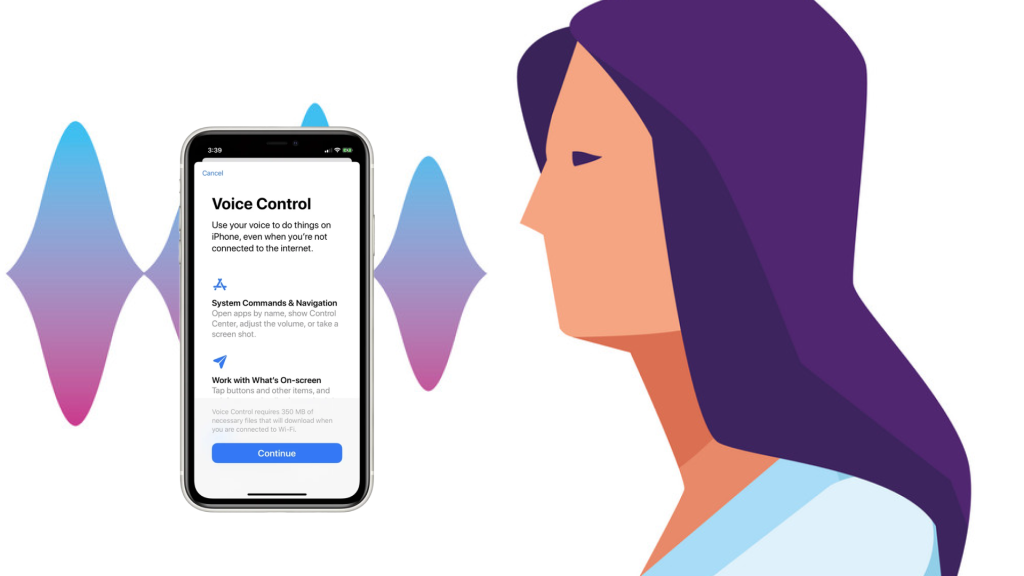You probably know that iOS is Apple’s mobile operating system and is known for its opacity, security, and excellent accessibility features. One of the cornerstones of its inclusive design is Voice Control, an assistive technology that allows users to browse their devices entirely through voice. This allows people with mobility barriers to control their iPhone and iPad hands-free.
Feature 1: Voice Control and Custom Shortcuts
iOS Voice Control allows users to operate their devices entirely through voice commands. This feature eliminates the need for physical interaction, making navigation hands-free. Users can also create personalized voice commands, enabling them to set custom shortcuts based on their specific needs (Figure 1).
In the medical model, personalized voice commands are seen as a tool for compensating physical impairments. This approach views Voice Control as a way to restore lost functionality. For example, a user with quadriplegic can regain the ability to control a device without touch. By offering an alternative access method, Voice Control compensates for the touch-based design of most devices(social model). It enhances performance by helping users overcome physical limitations with greater efficiency. Custom shortcuts make the technology even more practical, allowing users to adapt it to their specific tasks and workflows(functional model).
Feature 2: Overlays for Navigation Assistance
The system provides three types of overlays to help users navigate:
- Name Overlay (Figure 2): Displays and announces the name of each action button on the screen. Users can perform actions by simply saying the button’s name.
- Grid Overlay (Figure 3): Shows a numbered grid on the screen. This is useful when there are no visible buttons. Users can specify a number in the grid to click, slide, or scroll with precision.
- Number Labeling Overlay (Figure 4): Marks all action areas with numbers. This is ideal for users unfamiliar with button names. Actions can be performed by saying the corresponding number and action.
These overlays are compensatory tools for users with limited hand mobility. For these users, overlays offer an alternative way to interact with devices(medical model). In the social model, they help address the barrier of touch-based navigation, focusing less on physical impairment and more on creating inclusive access options.
Each overlay serves a specific purpose. The Name Overlay provides quick, direct access. The Grid Overlay is best for precision, such as in photo editing. The Number Labeling Overlay offers ease of use when button names are unknown. Users can switch between these overlays depending on the task. For example, the Grid Overlay is ideal for tapping non-button areas that require accuracy and control(functional model).
Challenges and Future if iOS Voice Control
Despite its benefits, Voice Control has some limitations. Voice recognition accuracy can be affected by accents, speech impairments, and background noise. These factors reduce its reliability for certain users. Additionally, prolonged use may cause vocal fatigue, making it less practical for extended tasks.
Future advancements could help overcome these challenges. Integrating eye-tracking technology could allow users to combine gaze and voice input for more precise control. AI-driven improvements in contextual recognition and predictive commands could further boost accuracy and usability. These developments would make Voice Control a more versatile tool, meeting the needs of a wider range of users.
Resources
How to use Voice Control on iPhone, iPad, and iPod touch | Apple Support
Use Voice Control on your iPhone, iPad, or iPod touch
How to customize Voice Control commands on your iPhone, iPad, and iPod touch




